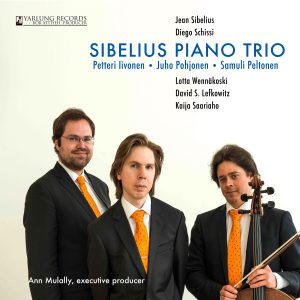Yarlung Records 52630
reviewed by Neville Cohn
As a child working towards a Trinity College of Music piano exam, I particularly liked a short piece – Arabesque – by Sibelius. It is a charm-laden, miniature delight and my first encounter with the Finnish master. It’s one of a considerable number of short pieces that poured from Sibelius’ pen. But how many of Sibelius’ little pieces come to mind as you read this?
 During the interval at a recent orchestral concert, I asked a number of concertgoers at random which works of Sibelius they could call to mind other than the symphonies, the Violin Concerto, the vast works inspired by Finnish legends and Finlandia? No one – and these were folk who were regular and enthusiastic concertgoers – could call any to mind. Certainly, there’s work to be done to make people more aware of at least some of Sibelius’ neglected works.
During the interval at a recent orchestral concert, I asked a number of concertgoers at random which works of Sibelius they could call to mind other than the symphonies, the Violin Concerto, the vast works inspired by Finnish legends and Finlandia? No one – and these were folk who were regular and enthusiastic concertgoers – could call any to mind. Certainly, there’s work to be done to make people more aware of at least some of Sibelius’ neglected works.
Sibelius’ output as a child (his first piece is said to have been written at the age of ten!) and as a young man is astonishing. At least part of the reason is that he grew up in a home where music was an inextricable – and very important – part of daily life. His siblings played piano and cello. Jean was the violinist of the family. His hopes of becoming a violin virtuoso were never realised. He’d have had to commence fiddle study much earlier to have had a hope of succeeding in that field. As was the case of Schumann, Sibelius’ having to forgo a life as a virtuoso was a personal tragedy – but his work as a composer brought an enduring fame that could never have been equalled as a concert soloist, no matter how gifted.
In addition to this, this intriguing compilation encompasses music written by contemporary Finnish composers whose names could well be new to most listeners living beyond the borders of Scandinavia.
Diego Schissi’s Nene, for instance, opens with a terrific, offbeat dance. It radiates gusto, with tricky rhythms and much pizzicato. Listen to a background of quiet pizzicato across which runs a dream-like cello line. Later, the attention is drawn to the piano with its stab-like utterances. The movements are intriguingly titled: Jumping on the Walls, Dozing on a Hanger; Riding a Mosquito!
David Lefkowitz’s Ruminations calls up images of Middle East dances and what might be a folksy Yiddish extemporisation, desperately melancholy and introverted.
There’s charm aplenty in Sibelius’ Korppoo Trio. True, it’s not recognisably by the Finnish master: the work is too early for that. But its jejune melodies are beautifully played. The finale. is a jovial, three-in-a-bar knees-up with an obeisance to Brahms and much tinkling from the piano near the top of its range. One could think of it as a trial run for an ascent to greatness.
Consider this: at a similar age, Shostakovich was already well ahead in the originality stakes. Mendelssohn’s overture to A Midsummer Night’s Dream was written as a teenager: his style was already fully formed. But with Sibelius, it was a case of good things being well worth waiting for.
Recordings like this don’t just happen. And those who have pooled their resources to this excellent end deserve real praise.The focussed work of many has been called upon to bring this CD into being: executive producer Ann Mulally, 100th Anniversary sponsors Randy and Linda Bellous and, crucially, the Sibelius Trio (Petteri Iivonen, Juho Pohjonen and Samuli Peltonen). This initiative is to mark the100th anniversary of an independent Finland.

